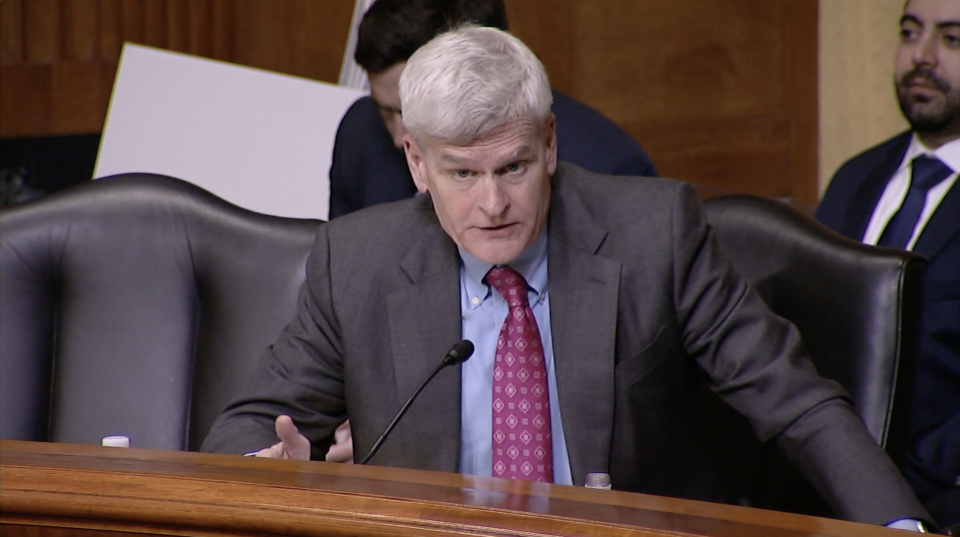
Superintendents name challenges for new school year
August 2, 2011100 Black Men unite for a 5K cause
August 4, 2011The 2011 legislative session produced a new iteration of the governor’s agenda to give higher education leaders business-like authority over their institutions.
House Bill 549, also known as the Granting Resources and Autonomy for Diplomas (Grad) Act 2.0, expands non-tuition freedoms for Louisiana universities that meet accountability metrics. It grants universities autonomies in purchasing, facilities, personnel and investment.
The original Grad Act introduced 52 metrics that gauged performance and offers the reward of an annual tuition increase. The state examines whether schools meet their targets in six categories: student success, articulation and transfer, workforce and economic development, institutional efficiency and accountability and reporting requirements.
The second Grad Act emphasizes the student success metrics n six-year graduation rates, retention from year 1 to year 2 and year 3, and overall completers among other categories n geared at better workforce preparedness.
While higher education leaders welcome each freedom as granted by the state, Stephen Hulbert, president of Nicholls State University, still has concerns with the balance of the Grad Act 2.0 and state versus institution allowances.
“There are far more accountabilities for the institution than there are autonomies,” Hulbert said. “There is a tiny carrot when it comes to autonomies and a bulldozer when it comes to accountability.”
The ideal autonomy, he said, would be the opportunity to run the university like a business. “Give us a budget at the beginning of the year, and we’re to balance the budget at the end of the year.”
It’s not that Nicholls doesn’t want to be held accountable.
Before either version of the Grad Act, the institution took measures to become more efficient, first imposing admission standards in 2005 and then raising them in 2010.
Nicholls’ Executive Vice President and Legislative Liaison Larry Howell said its newest admission standards n a minimum 21 composite score on the ACT or a 2.5 high school GPA n will bolster six-year graduation rates as the years progress.
In the short term, however, officials say they are recruiting about 600 students less every year, a loss in potential self-generated revenue.
In 2009, the cash-strapped university independently conducted a review of all its programs. It led to the elimination of an 11 academic programs, including the agriculture program that was graduating more than 20 people a year, according to Howell, and all two-year programs, which L.E. Fletcher Technical Community College absorbed.
When the Board of Regents ordered a low-completer review this year, only one program n business education n was eliminated.
“You know the truth is, if they would take n they don’t have much time to look at anything n but if they had time to look at anything, take a look at the way Nicholls is run.
“We’re run spotlessly. Our audits, performance measures and everything else. We’re run damn well. Reward it. Allow us to function, but don’t tie our hands behind our back and then start saying we have 40-some-odd accountability measures to see how well you’re doing.”
Three levels of achievement, rewards
Through the second Grad Act, the state will reward schools based on three tiers of achievements, which universities are required to satisfy in order, from base level to intermediate to high.
From Nicholls’ standpoint, the key freedom included in the base level is the ability to carry forward undedicated and unspent funding to the next fiscal year.
“If we had money left over, which we never do, then we had to send it back,” Howell said. “Maybe, when times are good, maybe build up a nest egg for times that tank like they did. We didn’t have that opportunity before.”
Nicholls should have no problem meeting the base-level qualifications, Howell said, but the “intermediate level has some things in it that are very difficult for a regional institution to meet.
“The intermediate is kind of out there, kind of funny, and there is not really a whole lot extra that you get out of it,” he said.
Legislation calls for four-year universities to meet at least two measures out of a list in order to qualify for the intermediate level:
• A review of all programs and academic offerings and action to improve the programs through modification, consolidation or elimination,
• A review and streamlining of all course offerings to align with program requirements and facilitate on-time graduation
• Setting the minimum ACT composite score for acceptance to be at least two points higher than the Board of Regents baseline for the type of institution (20 for Nicholls).
Six-year renewals
Per Grad Act legislation, agreements between the Board of Regents and individual universities must be reapproved every six years. For a school to qualify for a new agreement, it must have further increased its cohort graduation goals to eventually meet a benchmark of 50 percent over six years.
Nicholls is entering the second year of its initial agreement with the Regents, meaning it expires in June 2016. Nicholls must have a six-year graduation rate of 39 percent, a target the institution set, to renew for another six years.
At the expiration of the second agreement, in 2022, Nicholls must exceed a 50-percent graduation rate to renew its autonomies agreement, Howell said.
Nicholls is projecting a 37.2 six-year graduation rate in 2012 (2006 freshmen), according to its latest data. It would be a 1.7-percent increase from 2009.
“We wanted to raise graduation rates,” Jindal’s spokesman Kyle Plotkin said. “We think it’s completely appropriate for a school to graduate at least half of their students.”
College Results Online (www.collegeresults.org) utilizes U.S. Department of Education data to compare universities on a national level. The website includes a search feature that allows users to compare similarly characterized institutions, based on enrollment, tuition, financial aid and other factors.
Nicholls ranked 19th in six-year graduation rates for its 2003 incoming freshmen, the website’s most current data, when compared to 25 of its nationwide peers. Its rate, 35.5 percent, was below the 39.2 six-year average for the 26 schools.
Included amongst its peers, as determined by the website, are Southeastern Louisiana University, University of Louisiana Monroe, University of Central Oklahoma and University of West Georgia.
Using the same data, LSU at Baton Rouge ranks 26th when compared to 25 of its peers, other flagship institutions, with a 58.9 percent six-year graduation rate. The average six-year rate is 69.2 percent.
“We suggested to a few legislators, and it never went everywhere, we suggested challenging us all on this first run-through to meet the average of our peers,” Hulbert said. “Nicholls should meet the average of its peers, 38 to 40 percent. LSU should meet the average of its peers, 70 percent.”
No one goes beyond the data to say, ‘Wait a minute, LSU isn’t shining,’” Hulbert said. “The closest one that is shining is [Louisiana] Tech.”












